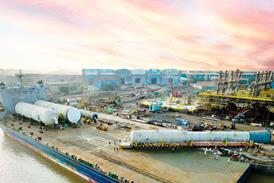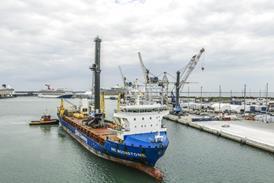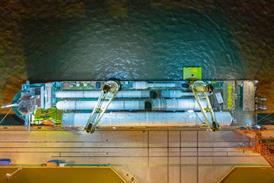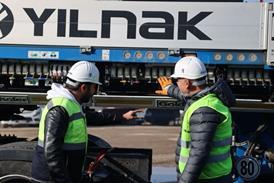Crane service provider Thömen, part of the Hüffermann Group, is using four Liebherr cranes to replace two railway overpasses on the Alster River in Hamburg.
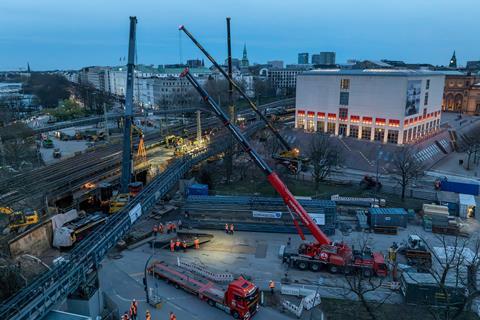
The overpasses – Ferdinandstor and An der Alster – are critical links for around 900 regional and long-distance trains on a daily basis. For Deutsche Bahn, a key part of the reconstruction work on the ageing infrastructure is to minimise the impact on ongoing railway operations.
The planning and coordination work before and during the construction phase is intensive; the time window for crane deployment is precisely defined and the work on site needs to be focussed. For this, Thömen has deployed an LTM 1650-8.1 with its LTM 1160-5.2 auxiliary crane and an LTM 1350-6.1 with a 130-tonne auxiliary crane. The LTM 1350-6.1 belongs to the company Eisele, which is also part of the Hüffermann Group.
Steffen Wilken, a sales representative at Thömen, said: “Our job here is to excavate the existing bridges. Due to the tight time window, we also work at night. The cranes are in operation 24 hours a day, seven days a week.”
One of the biggest challenges the team faced was the lack of space for the four cranes near the main railway station in the heart of Hamburg. This meant that there wasn’t enough turning radius available for the 650-tonne capacity crane. Wilken explained: “Due to the tight space conditions, we had to jack up the LTM 1650-8.1 very high. We supported it with excavator mats and base plates, so the ballast of the crane could swing over an existing bridge foundation 3.5 m high.”
His colleague Marc Kuebart, who is responsible for the CAD planning and project management for the job, added: “An auxiliary cable bridge, which had to be erected in advance, was the biggest challenge in terms of deploying the crane. It also significantly restricted the crane’s possible working area.” The LTM 1130-5.1 had already been tasked with lifting the crane parts over the auxiliary cable bridge during assembly of the LTM 1350-6.1.
The existing railway bridges were then excavated in 60-tonne sections and unloaded onto a designated, prepared site. On steel plates protecting the ground, the workers cut the bridge sections into manageable pieces for removal.
Currently, in the second construction phase, six divided auxiliary track bridges are now being installed, each weighing 50 tonnes. “The first challenge is to convert the 650-tonne crane with the luffing lattice jib under these extremely cramped conditions. The 350-tonner is serving as an auxiliary crane to assemble the 21 m-long lattice jib,” said Kuebart.
According to Deutsche Bahn’s plans for the project, the new auxiliary bridges will be situated above the existing abutments, which need to be dismantled. This will allow for the demolition of these abutments below the rolling railway traffic, and for the construction of substructures for the new railway bridges.

